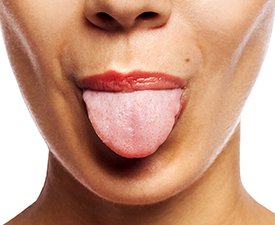We all know the tongue acts as taste buds for foods, aids in chewing food and used for locking lips with another. For some a mere means for fashion, by piercing it.
But many have a poor understanding that your tongue can be giving you signs with respect to your health.
Remember the stereotype of visiting the Doctors, when having a sore throat, ear infection, to a runny nose and the Doctor would ask you to stick your tongue out and say Arrrrr?
I know for sure at the age of 5, I was thinking why the hell is my Doctor asking me to stick out my tongue unaware at the time that our (ears, nose, and throat) are all connected and that our Doctor can get a good idea of your general health at the time, all through examining your tongue.
Surprisingly through examining the tongue can also give a professional an idea of any stomach related issues which a lot of complementary therapies, including Traditional Chinese Medicine (TCM) and naturopathy, use the tongue to aid diagnosis.
In general, a healthy tongue should be pink and covered with small nodules (papillae). Any deviation from your tongue’s normal appearance, or any pain, may be cause for concern.
A white tongue, or white spots on your tongue, could be an indication of the following:
Oral thrush: a yeast infection that develops inside the mouth, appearing as white patches that are often the consistency of cottage cheese.
Oral thrush is most commonly seen in infants and the elderly, especially denture wearers, or in people with weakened immune systems.
People with diabetes or those taking inhaled steroids for asthma or lung disease can also get it. Oral thrush is more likely to occur after you’ve taken antibiotics.
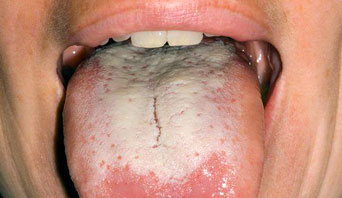 Image of white coated tongue
Image of white coated tongue
Leukoplakia: a condition in which the cells in the mouth grow excessively, leading to white patches on the tongue and inside the mouth.
Leukoplakia can develop when the tongue has been irritated. It’s often seen in people who use tobacco products.
Leukoplakia can be a precursor to cancer but isn’t inherently dangerous by itself. If you see what you think could be leukoplakia, contact your dentist for an evaluation.
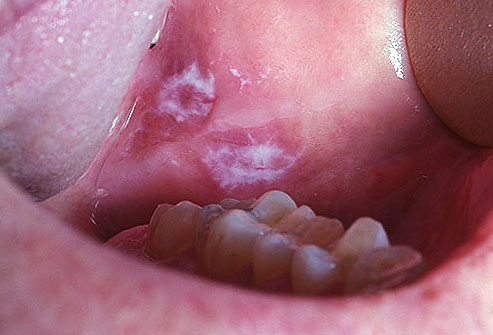 Image of Leukoplakia
Image of Leukoplakia
Oral lichen planus: A network of raised white lines on your tongue that looks similar to lace. We don’t always know what causes this condition, but it usually resolves on its own experts’ state.
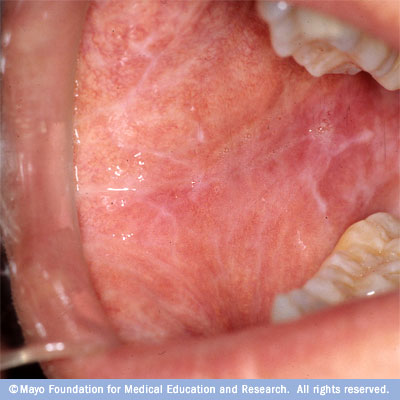 Image of Oral Lichen Planus
Image of Oral Lichen Planus
A red tongue could be a sign of the following:
Vitamin deficiency: Folic acid and vitamin B-12 deficiencies may cause your tongue to take on a reddish appearance.
Geographic tongue: This condition causes a map-like pattern of reddish spots to develop on the surface of your tongue. These patches can have a white border around them, and their location on your tongue may shift over time. Though it’s not a worrying factor and is usually harmless stated by health experts.
Scarlet fever: An infection that causes the tongue to have a strawberry-like (red and bumpy) appearance. If you have a high fever and a red tongue, you need to see your family doctor, as antibiotics are necessary to treat scarlet fever.
Kawasaki disease: A condition that can also cause the tongue to have a strawberry-like appearance, more commonly seen in children under the age of 5 and is accompanied by a high fever. Kawasaki syndrome is a serious condition that demands immediate medical evaluation.
 Image of red tongue
Image of red tongue
If your tongue is black and hairy: Much like hair, the papillae on your tongue grow throughout your lifetime. In some people, they become excessively long, which makes them more likely to harbor bacteria. When these bacteria grow, they may look dark or black, and the overgrown papillae can appear hair-like. Fortunately, this condition is not common and is typically not serious. It’s most likely to occur in people who don’t practice good dental hygiene, diabetes, taking antibiotics or receiving chemotherapy may also develop a black hairy tongue.
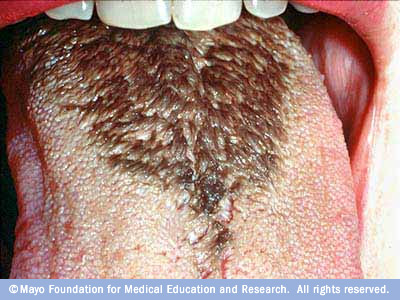 Image of black hairy tongue
Image of black hairy tongue
If your tongue is sore or bumpy
Painful bumps on your tongue can be due to the following:
Trauma: Accidentally biting your tongue or scalding it on something straight out of the oven can result in a sore tongue until the damage heals, right down to grinding or clenching your teeth can also irritate the sides of your tongue and cause it to become painful.
Smoking: Smoking irritates your tongue, which can cause soreness.
Canker sores: Mouth ulcers, which any people develop canker sores on the tongue at one time or another. The cause is unknown, but stress is believed to be a factor of Canker sores. Though they normally heal without treatment within a week or two.
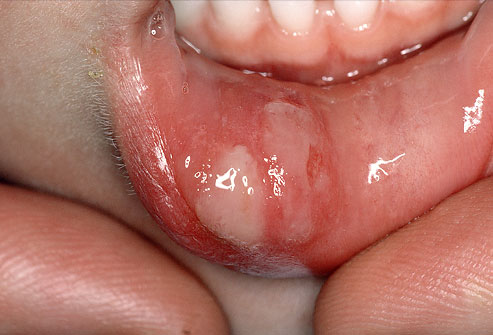 Image of Canker Sores
Image of Canker Sores
Oral cancer: A lump or sore on your tongue that doesn’t go away within two weeks could be an indication of oral cancer. Keeping in mind that many oral cancers don’t hurt in the early stages, so don’t assume a lack of pain means nothing is wrong. It’s strongly advised to seek advice from a professional.
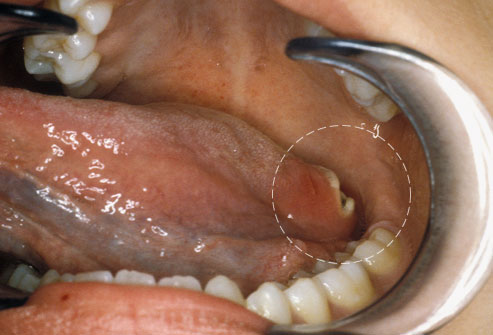 Image of oral Cancer
Image of oral Cancer
Don’t panic by reading the above, though it is advised both from Dentist & Doctors to regularly check your tongue as well as keeping hygiene in the mouth in control.
Regular check up at your dentist is highly recommended, as well as investing in a brush specifically for the tongue, prevents build up of bacteria in the mouth as well as preventing your breath turning bad. Drinking water and lots of it is also highly recommended.

